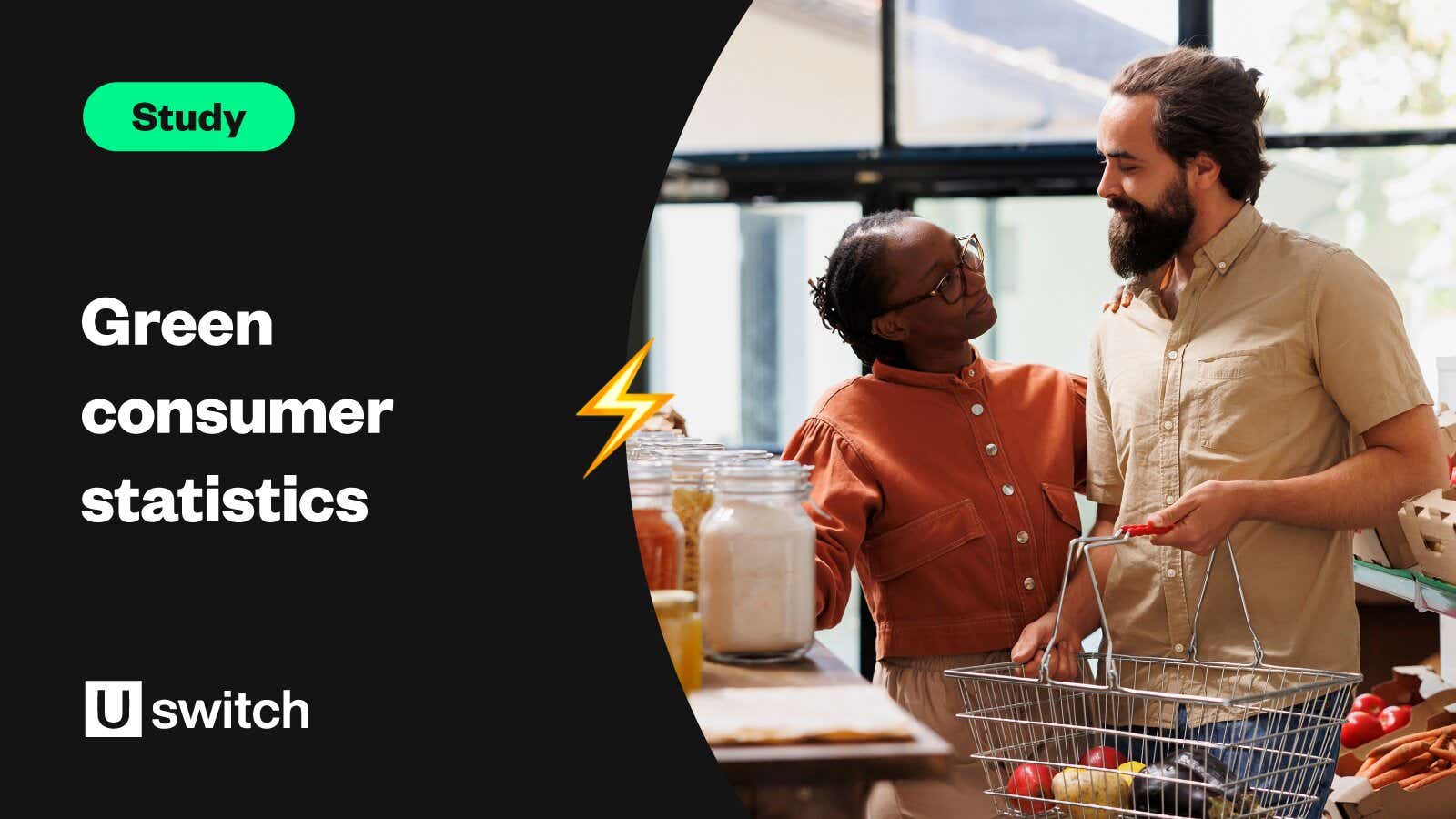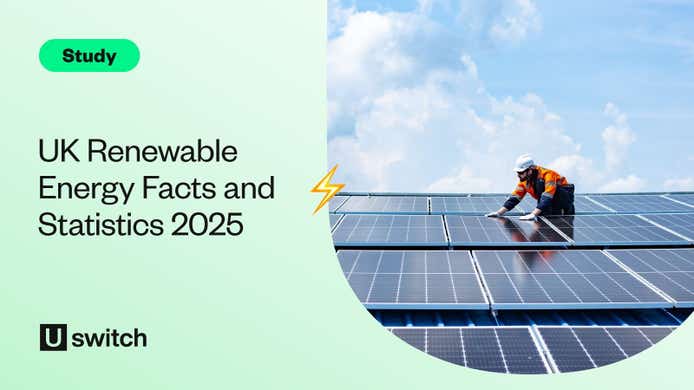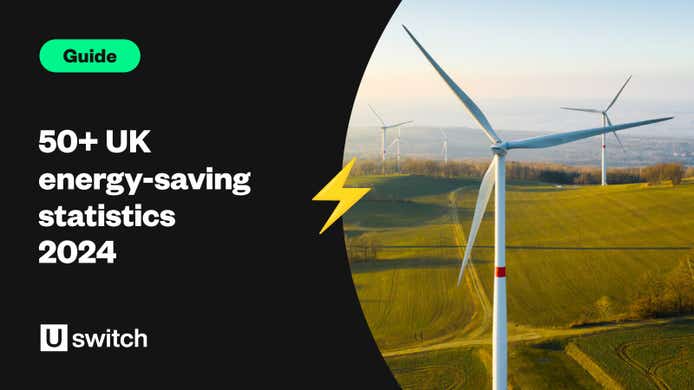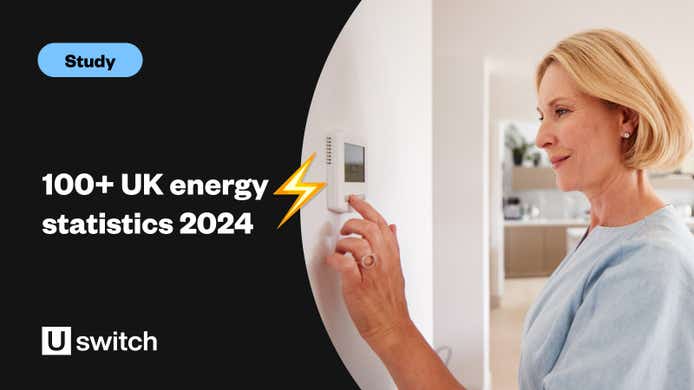As the push towards a more sustainable future accelerates, the rise of the green consumer increases by the year. The growing number of eco-friendly products and services on the market has resulted in more people adopting a socially conscious approach when shopping for groceries, goods, and services.
With this in mind, we’ve highlighted some of the main green consumer questions and statistics impacting the UK today. These offer key insight into the green consumer market as we build towards a net zero future.
1. What percentage of products are sustainable?
Recent green consumer statistics found that sustainable products occupied nearly a fifth (18.5%) of the consumer packaged goods (CPG) market in 2023. This represents a rise of 1.2% from 2022 (17.3%) and a climb of 4.8% from 2015 (13.7%).
The percentage of the overall CPG market occupied by sustainable products (2015-23)

The growth of eco-friendly products is outpacing non-sustainable goods, with products marked as sustainable achieving a compound annual growth rate (CAGR) of 9.9% in the five years to 2023. By comparison, the CAGR for conventional products was 6.4%.
Overall, this means that sustainable products were responsible for a third (33%) of all growth for CPGs, despite occupying less than a fifth of the market.
2. How many customers are green consumers?
A report from Whistl found that 96% of surveyed UK customers said they had purchased eco-friendly and sustainable products before. Of these, over a third (34%) said they made eco-purchases regularly, with just under two-thirds (62%) claiming they did so occasionally.
The sustainable product purchase habits of customers in the UK

The same report found that around two in five (41%) customers considered purchasing eco-friendly products ‘very important’, with only 6% stating it was ‘not important’ to them.
3. Which generation has the most green consumers?
A 2024 article from The Round Up found that millennials are the generation most likely to have made modest, significant, or total changes toward sustainable living. More than two-thirds (67%) of surveyed millennials made this claim, compared to around two-fifths (62%) of Gen Z respondents.
The percentage of people claiming to have made changes toward sustainable living by generation

At the other end of the scale, boomers were the least likely to have made eco-friendly adjustments, with less than six in 10 (59%) saying they’d made sustainability-based changes to their lifestyle. This was 8% lower than millennials and 3% less than Gen Z.
4. What are the main factors driving green consumption?
Green energy stats show that a company’s poor environmental track record can alienate buyers from a brand. A survey covered by ISO-Cert Online in 2023 found more than eight in 10 (82%) respondents cited this as a factor that would deter them from a company – the highest percentage for any reason.
The most common environmental factors alienating customers from brands
| Factor in alienating a customer from a brand | Percentage of survey respondents who cited this factor |
|---|---|
| Poor environmental track record | 84% |
| Unsustainable packaging | 83% |
| Poor compliance record | 82% |
| Irresponsible sourcing of materials | 82% |
| Poor human rights track record | 82% |
(Source: ISO-Cert Online)
Unsustainable packaging was the next most common green issue referenced by customers, with 83% claiming this could alienate them from a company – just 1% less than a poor environmental record.
There were three other factors chosen by more than 80% of respondents, with poor compliance records, irresponsible material sourcing, and poor human rights all referenced by 82%.
5. Which country has the most eco-conscious consumers?
A report from Statista found more than three-quarters (76%) of lifestyle brand consumers in France cared more about product sustainability in 2023 than they did a year earlier. This was the highest figure recorded by any country – 2% more than second-placed Italy (72%).
The percentage of lifestyle brand consumers who care more about product sustainability in 2023 than they did in 2022 by country

Seven in 10 (70%) lifestyle brand consumers in the US and UK cared more about sustainability in 2023, compared to just under two-thirds (64%) in Germany.
6. How is the internet contributing to green consumerism?
Sustainable goods tend to sell better online than in-store. Three-quarters (75%) of product categories saw their sustainable products achieve a higher market share via e-commerce compared to in-store sales.
Additionally, global Google searches relating to sustainable products more than doubled between 2017 and 2022, rising by around 130% over five years.
7. How can we encourage more people to go green?
Analysis of green consumption statistics showed that affordability was the main factor affecting people's decision to adopt sustainable shopping practices. Over half (56%) of survey respondents said that making sustainable alternatives more affordable would encourage them to adopt more eco-friendly shopping habits.
The most common factors people claimed would encourage them to adopt more sustainable shopping habits (2023)

Just over half (53%) of consumers cited better schemes to remove plastics and packaging as a factor that would encourage sustainable shopping. This was the second most popular answer and the only other one listed by more than half of respondents.
At the other end of the scale, less than a third (32%) claimed that improved transparency on a company’s sustainability credentials would influence their behaviour.
8. How many people in the UK shop second-hand?
A 2023 report from Barclays found that UK consumers spent more than £5.92 billion on second-hand products over the previous year. The same report found that consumers spent an additional £1.07 billion renting items for temporary use instead of buying new ones.
It’s estimated that this shift towards sustainable shopping boosted the UK economy by £6.99 billion throughout 2023.
The total UK spend on second-hand products and item rentals (2022-23)

The rise in sustainable shopping is backed up by survey responses. Over two-fifths (44%) of respondents in a Barclays survey reported purchasing more second-hand items in 2023 than a year earlier, with almost three-fifths (57%) stating that their re-commerce shopping habits had remained consistent.
9. What are people’s attitudes to green consumerism?
A 2024 report from The Round Up found more than three-quarters (78%) of consumers feel sustainability is an important factor when shopping. Additionally, more than half (55%) stated they were willing to pay more for eco-friendly brands.

The report also found that:
- 55% are willing to pay more for eco-friendly brands
- 78% want to lead more sustainable lives
- 51% avoid products that they know are bad for the environment.
10. How much is the sustainable food industry worth?
The UK ethical food industry was worth over £12 billion in 2022–a 7.6% rise from 2021. Fairtrade products and sustainable fish saw the biggest increase in market value, with growth of 15.9% and 16.2%, respectively.
The value of different UK ethical food categories (2010 to 2022)

The latest figures mean that the ethical food industry has almost tripled in value since 2010, rising by 186% over 12 years.
FAQs
What is a green consumer?
A green consumer refers to a member of the public who actively chooses to buy products that have been produced in a way that protects the environment and increases sustainability. Examples of green consumption include:
- Purchasing products that are recyclable and biodegradable
- Using renewable energy sources
- Recycling plastic from product packaging after use or consumption.
How do I shop more sustainably?
There are numerous eco-friendly changes you can make to help you shop more sustainably. These include:
- Buying more second-hand clothes and home products
- Investing in higher quality products and clothing that last longer
- Choosing locally sourced foods and products
- Cutting down on food products sold in plastic packaging
- Investing in a reusable shopping bag.
Adopting even a few of these habits regularly will ensure you're reducing your own environmental footprint and contributing to a greener society.
How big is the green consumption market?
Fortune Business Insights valued the global green technology and sustainability market at nearly £13 billion in 2013. The industry is projected to grow further to £15.5 billion in 2024 before reaching £70.7 billion by 2032.
If these figures are correct, it will mean that the industry should achieve a CAGR of 20.9% between 2024 and 2032.
Methodology and sources
- https://theroundup.org/environmentally-conscious-consumer-statistics/#Sustainable_Products_Market_Data
- https://www.stern.nyu.edu/experience-stern/about/departments-centers-initiatives/centers-of-research/center-sustainable-business/research/csb-sustainable-market-share-index#:~:text=Products%20marketed%20as%20sustainable%20now,4.8%20percentage%20points%20since%202015.
- https://www.ethicalconsumer.org/sites/default/files/media-file/2023-12/EC-Markets-report-2023-web-final2.pdf
- https://www.statista.com/statistics/1312314/increase-care-for-sustainability/
- https://www.retail-insight-network.com/news/sustainable-shopping-trend-boosts-uk-economy/





